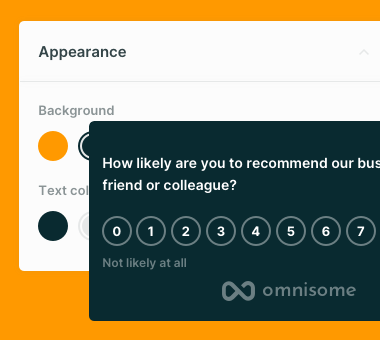Monday, February 6, 2023
What is Employee Net Promoter Score ® (eNPS)
The Employee Net Promoter Score (eNPS) is a metric used by businesses to gauge employee satisfaction and engagement.
eNPS is an easy way to understand how likely an employee is to recommend their employer to others. It is an important tool for employers to identify areas where they can improve the employee experience, and can be used to measure employee loyalty to the organization.
Employee Net Promoter Score is based on a standard Net Promoter Score but focused on the organization internally.
A typical eNPS survey consists of a single question - “How likely are you to recommend your organization to a friend?”. Employees respond to that question on a scale of 0 to 10, with 0 being "Not likely at all" and 10 being "Extremely likely".
Based on their answers, employees are broken into three categories:
- Promoters (9-10)
- Passives (7-8)
- Detractors (0-6)
The eNPS score is calculated using the NPS formula by subtracting the percentage of Detractors from the percentage of Promoters. A higher score indicates higher levels of employee satisfaction and engagement.
What are the benefits of eNPS?
It is an extremely important metric for any business to measure employee satisfaction and engagement. Your eNPS score is a direct representation of your organizational health.
eNPS is an easy and affordable way to get an understanding of how employees feel about their job, their colleagues, and the organization as a whole.
The data shows that organizations with high eNPS are more productive over time since their employees are more engaged and focused on delivering their best.
In addition, companies with high eNPS are more likely to attract new talents and reduce the time-to-hire.
An extended eNPS survey with additional questions can help organizations to get valuable feedback. This information is important for organizations to improve and build a healthy culture.
How to measure eNPS properly?
Measuring eNPS is not a one-time deal but a regular survey to conduct across the company.
Best practices suggest conducting an eNPS survey once a month - no more and no less. Such a period will give you enough time to analyse data and implement changes. As the new data comes in, you will see what effect your changes had on eNPS.
It is also recommended to measure eNPS and gather feedback anonymously since employees tend to artificially raise their eNPS if the votes are public.
For organizations, it is important to receive honest eNPS and feedback to act accordingly and not to fall into euphoria.
To measure eNPS, you can create your own eNPS survey or rely on NPS software available online. Most of the tools are offering an easy way to adjust a standard NPS survey for internal use (eNPS).
What is a good eNPS?
A typical eNPS score can vary from -100 to 100 where 40+ is considered to be excellent.
Organizations with eNPS 40 and above are doing a great job and should focus on keeping their eNPS high. Such companies have highly engaged employees that are satisfied with their employers. Companies with high eNPS usually have low employee churn rates.
For organizations having their eNPS between 10 and 40, it is important to determine what holds your employees back from being more engaged. An extended feedback survey can help you to determine the exact points where your organization is falling behind.
Remember that any eNPS above 10 is considered to be good.
What if your eNPS is below 10 or negative? It is an important signal that you should act immediately. The health, culture, and motivation at your organization are not up to the level. Companies with low eNPS usually suffer from low productivity and high employee turnover.
Low eNPS should be considered a red flag and addressed by organizations at all levels, including executives.
How to improve eNPS?
Employee Net Promoter Score is something you can not improve in a month. This will require a constant effort and engagement on all levels.
The good thing is that you already know your eNPS (if not - start to measure it now).
To improve your eNPS, start with some basic activities:
- Conduct 1-on-1 sessions with your employees
- Run anonymous surveys to gather feedback
With this information available, you should be able to build a plan and define initial action points along with some “quick wins” to see the results earlier.
As you move forward and analyze feedback, there are the following things you can do:
- Review the work environment (maybe there is something missing)
- Introduce organizational behavior policy
- Establish a regular internal feedback loop
- Organize side events to improve employee morale
- Rethink your hiring policy
- Have regular performance reviews
- Adjust workflows and experiment with new methods
As a business leader, you should acknowledge that improving eNPS may sometimes require making tough decisions. You may identify employees that produce a toxic environment or block changes. In such cases, you need to address these issues on an individual basis and act accordingly.
The most important part of improving eNPS is moving slowly but steadily with a clear plan and reflecting back on the changes you make.
Conclusions
Employee Net Promoter Score (eNPS) is a powerful tool to measure the health of your organization. It can help you to understand how satisfied, engaged, and loyal your employees are.
It is important to start measuring eNPS early as it can be used as an indicator of potential problems.
A high eNPS will surely have a positive impact on business performance and customer satisfaction.
Explore more
It’s time to start understanding your customers
Stop playing guesstimates. With Omnisome, you are building a lean feedback loop with your customers joining the game.
